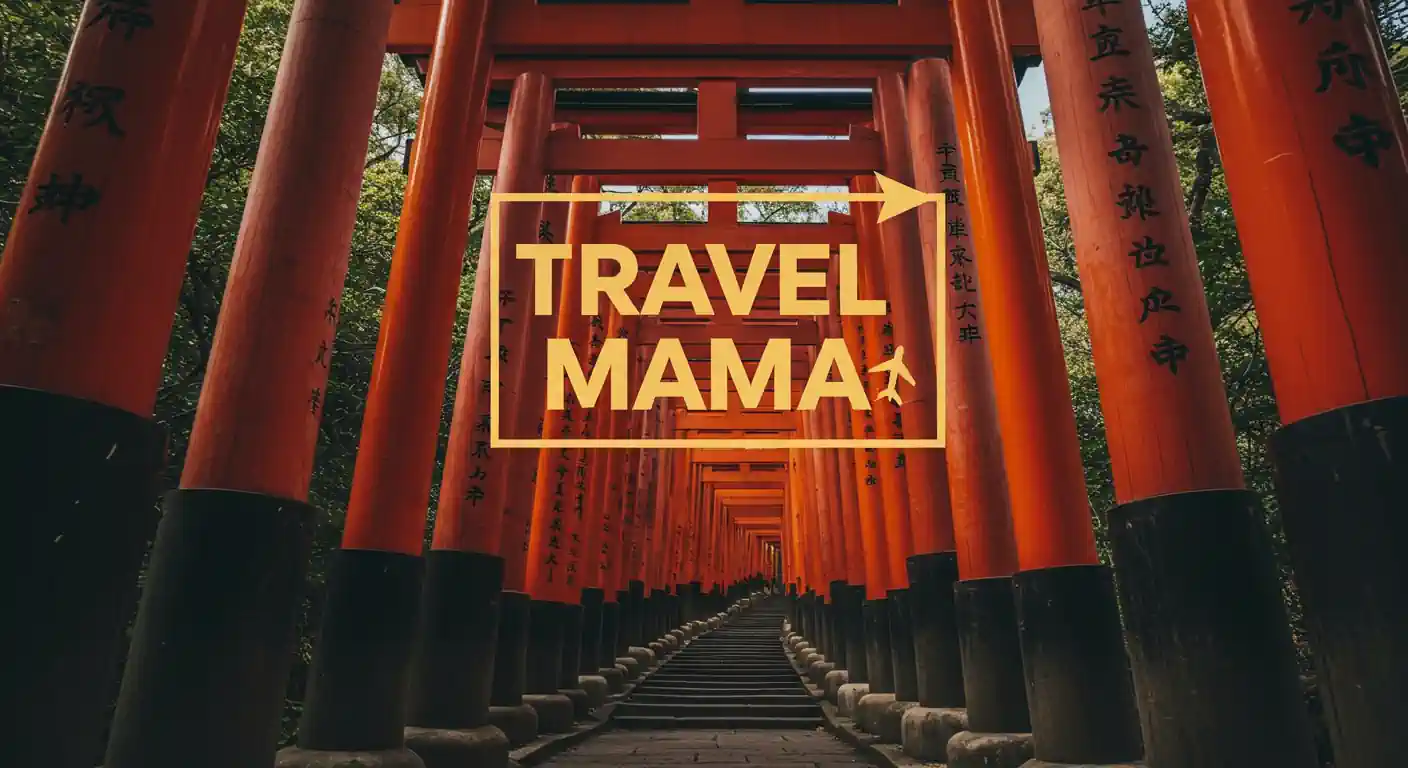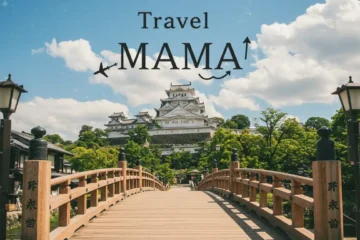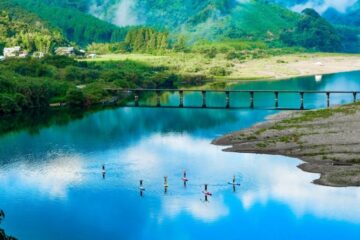九州小包團
📍Visit Dazaifu Tenmangu, which has a history of 1100 years, to pay respects to the "God of Learning" and the "God of Calligraphy."
📍 Take a boat ride on the beautiful Yanagawa Canal to experience the scenic views of this city, known as the "Water Town."
📍 Relax at the historic Unzen Hot Springs, enjoying the healing sulfur baths and beautiful scenery.
| Meeting Point | Fukuoka Airport | ||||||||||||||
| Included |
|
Excludes |
|
– Overseas green plate tour buses or Toyota Alphard 7-seater, Hiace 10-seater / 14-seater (vehicle models are for reference only).
– Please provide your overseas contact information as well as contact information for at least one other person traveling with you. If you plan to use a local mobile phone number while abroad, please provide that number as well.
– Please try to wear comfortable clothing and shoes.
– The tour guide may make temporary adjustments to the itinerary's sightseeing order based on factors such as weather, schedule, and transportation. The guide will seek the consent of the guests before making any changes.
– Due to unforeseen circumstances such as transportation issues, weather conditions, or other force majeure events, any resulting delays, changes in the travel route, or cancellation of itinerary or attractions, the company will not be held responsible, and refunds will not be provided. We appreciate your understanding in this matter.
– Our company is not responsible for any delays in the actual end time of the itinerary due to road congestion on Saturdays, Sundays, public holidays, or peak travel periods such as Golden Week or summer vacation. We also do not assume responsibility for any losses or subsequent expenses incurred by guests as a result of unavoidable delays in the return time due to unforeseen circumstances.
– No refunds or cancellations will be accepted due to suboptimal viewing conditions at attractions caused by inclement weather.
– No refunds will be provided if a guest is unable to join the tour on the specified date due to their own personal reasons.
– Travelers are responsible for their own health and well-being. They should ensure they are physically able to participate in the tour and understand that they assume full responsibility for any personal accidents or adverse consequences.
– Travelers should exercise caution and be mindful of their personal and property safety during the tour and any self-arranged activities. Any personal or property losses incurred by travelers due to their own actions or the actions of third-party providers are the sole responsibility of the travelers. If such losses result in damages to the travel agency, the travelers will be held liable for compensation.
– Before departure, it is necessary to purchase travel insurance that includes coverage for COVID-19, as required by the entry policies of Japan.
– If a traveler decides to split from the group or deviate from the planned itinerary without authorization, they are not entitled to request any refunds from the travel agency. If the travel agency incurs any losses as a result, they have the right to seek compensation from the traveler.
– Please read the important clauses of this agreement carefully, as they pertain to the rights and interests of the traveler. By confirming, you acknowledge that you have fully read, understood, and accepted all the terms and conditions of this contract before using our services.
– As part of our service, we assist in arranging recommended unique experiences and food recommendations during the itinerary. However, please note that if a recommended establishment is closed or unavailable due to reasons such as business hours or capacity limitations, which are beyond our control, our company cannot be held responsible. We appreciate your understanding in this matter.
– Please note that in some cases, attractions may be closed or undergoing maintenance without prior notice. We appreciate your understanding in such situations. The hotels listed in the itinerary are commonly used for this tour. However, if a particular hotel is closed or fully booked, we will arrange accommodation in a hotel of similar quality. Please be aware of this possibility.
– Please make sure to be at the designated meeting point at the specified time. It is important not to be late. If you are unable to participate in the tour due to your own reasons, we cannot wait for you and no refunds or changes will be provided. If you decide to catch up with the group by taking a taxi or incur accommodation expenses, we regret to inform you that our company cannot cover those costs. We appreciate your understanding in this matter.
– If meals have been pre-arranged by our company at designated restaurants, refunds will not be provided if tour participants choose not to dine together. It will be considered an automatic forfeiture of the meal.
– During peak travel seasons such as summer holidays, cherry blossom season, and autumn foliage, popular attractions and amusement parks tend to be crowded. In such cases, our company may make necessary adjustments to the itinerary and meals based on actual traffic and sightseeing conditions, in order to ensure the smooth visitation of all destinations. We kindly request the cooperation of our guests in this matter.
– Our bus service operates until 8:00 PM each day. However, if there is a delay in the group's departure from a particular attraction due to the late arrival of guests, resulting in the need for an extended bus service, according to Japanese regulations, a fee of 10,000 Japanese yen per hour will be charged to cover the extension costs for the driver. This additional fee will be the responsibility of the guests to bear.
– In order to ensure the safety of travelers, this tour does not accept pregnant women or individuals aged 80 and above without accompanying children or direct relatives. For participants aged 65 and above, as well as those with specific medical conditions or medical history, it is essential to inform the travel agency before registration. Such participants will be required to sign a liability waiver, have a companion accompany them, and purchase accident insurance that includes overseas emergency assistance. Your cooperation in this matter is appreciated.
– If there are changes to the meeting time and place for your itinerary, we will contact you via WhatsApp, WeChat, Line, or other messaging services. Please keep an eye out for updates.
Day 1
Upon arrival at the airport, the driver will greet the guests with a sign and drive them to the hotel for rest.
Dazaifu Tenmangu Shrine: The shrine enshrines Sugawara no Michizane, who is revered in Japan as the "God of Learning" and the "God of Calligraphy." With a history of 1100 years, it is respected across Japan. This place is considered a sacred site for praying for success in exams, with up to 7 million people visiting annually to pray and write their hopes for success on small wooden plaques.
Yanagawa Water City: Fukuoka's Yanagawa is known as "Water Town." Hundreds of years ago, moats were constructed here to protect an ancient castle. Nowadays, visitors can explore by taking a boat ride along the waterways. Yanagawa is also called the City of Water due to its numerous canals and is the hometown of the poet Hakushū Kitahara.
Day 2
Nagasaki Peace Park: The Nagasaki Peace Park was built on a hill north of where the atomic bomb exploded, as a memorial park praying for world peace. Within the park, there are facilities like the Peace Statue and the Peace Memorial Hall. The bluish Peace Statue has its right hand pointing towards the sky and its left hand extended sideways, symbolizing that only in a world free from the threat of nuclear bombs can peace be enjoyed.
Glover Garden: Glover Garden is a tourist spot located in the Minamiyamate area of Nagasaki City, Nagasaki Prefecture, Japan. It was the residence of British merchants Thomas Blake Glover, Frederick Ringer, and William J. Alt after Nagasaki opened for foreign trade in 1859. It is now listed as a World Heritage site.
Day 3
Unzen Onsen: Unzen Onsen is a hot spring located in Unzen, Obama-cho, Unzen City, Nagasaki Prefecture. It is historically significant as it was the first hot spring area designated within Japan's first national park. The area features more than 30 sulfuric acid pools, and local resorts offer hot spring water for you to soak in.
Shimabara Castle: Shimabara Castle is a Japanese-style castle located in Shimabara City, Nagasaki Prefecture, at the foot of Mount Unzen, near the Ariake Sea. Its structure is generally that of a rectangular, connected-style flatland castle, characterized by its high and sturdy stone walls.
Ferry Across the Sea: Crossing from Nagasaki to Kumamoto
Day 4
Kumamoto Castle: Also known as Ginkgo Castle, Kumamoto Castle is one of Japan's famous landmarks. The "Kumamoto Castle Ruins" are designated as a National Special Historic Site, with 13 structures including turrets, gates, and walls classified as National Important Cultural Properties. Together with Osaka Castle and Nagoya Castle, it is counted among Japan's Three Great Castles.
Suizenji Jojuen Garden: Suizenji Jojuen Garden is a famous garden located in Kumamoto City, Kumamoto Prefecture, showcasing traditional Japanese garden art.
Day 5
Senpaku Park: Senpaku Park is situated in the Iso district of Yoshino Town, Kagoshima City, at the southernmost tip of Kyushu, Japan. It was the villa and garden of the Shimazu family, lords of the Satsuma Domain, also known as Iso Garden, covering about 5 hectares. Built in 1658, the garden's style and art borrow from Chinese garden architecture techniques, notably the method of "borrowed scenery," which blends artificial decor with natural landscapes, earning it the reputation as one of the world's famous gardens. Here, you can find Japan's oldest gas lamp, the "Crane Lantern," and the Hopekaku Tower, said to have been a gift from the King of Ryukyu. In essence, Senpaku Park is like a treasure trove of history.
Udo Shrine: Facing the Nichinan Coast, the main hall of Udo Shrine is located within a cliff cave on the Pacific coast, constructed along the mountains with several entrance gates. Importantly, it enshrines the ancestral deity of the Japanese people. Legend has it that the father of Japan's first emperor was born here and was nourished by the dripping spring water from the rocks. Inside the shrine, there's the "Mother Stone," with two protrusions resembling female breasts, said to ensure smooth childbirth and ample milk for women who touch them. On the beach below the shrine, there's a turtle-shaped rock with a round depression on its back; it's believed that if men use their left hand and women their right to throw a piece of unglazed clay, a specialty of the shrine, into this hole, their dreams will come true.
Experience Sand Baths: Being buried in sand is a unique form of hot spring bathing found only in Japan.
Day 6
Takachiho Shrine: Takachiho Shrine is located in Takachiho Town, Nishiusuki District, Miyazaki Prefecture, Japan, and is currently listed as a Beppyo Shrine by the Association of Shinto Shrines. In ancient times, it was known as "Jissha Daimyojin" or "Jissha Shrine," and in the 4th year of Meiji (1871), it was renamed "Mita Shrine."
Takachiho Gorge: Takachiho Gorge is located in Miyazaki Prefecture and is also known as the Gose River Gorge. This gorge was formed by volcanic activity from Mount Aso; about 100,000 years ago, pyroclastic flows from a volcanic eruption flowed down the then-Gose River, cooling to form igneous rock with columnar jointing. Subsequent erosion by the Gose River created the cliffs that today stand between 80 to 100 meters high and stretch for about 7 kilometers. In 1934, it was designated by the Japanese government as a "Place of Scenic Beauty" and a "Natural Monument," and on March 25, 1965, it was included in the Sobo-Katamuki Prefectural Natural Park. The most famous sight within the gorge is the Manai Falls, listed among Japan's Top 100 Waterfalls. The cliffs along the gorge are made of slightly reddish andesite, and from spring to early summer, cherry blossoms and azaleas bloom, while in autumn, the leaves turn red, offering different seasonal views throughout the year.
Day 7
Kitsuki Castle: Kitsuki Castle is a beautiful ancient castle in Oita Prefecture, Kyushu, Japan. In this town, known as "Little Kyoto," there is a white stone castle, a castle town area called "Sandwich Street," and an ancient slope known as "Vinegar Shop Slope." These were constructed in the early Muromachi period (1393) by the samurai Kizuki Yorinao on the 30-meter-high Daizan hill.
Yunotsubo Street: Yufuin is a small town with a cozy atmosphere, where there's a main street called "Yunotsubo." It welcomes thousands of tourists daily. Strolling here, you'll find Oita-style snacks along the street, shops with various styles, and stalls brimming with exquisite goods, making this narrow street always bustling. Besides the unique boutiques, the area around Yufuin is dotted with distinctive art museums, allowing visitors to enjoy both nature and art. At the end of Yunotsubo Street lies one of Yufuin's most famous tourist spots, Lake Kinrin.
Lake Kinrin: Located in the most lively area of Yufuin, Lake Kinrin is famous for its dreamlike scenery where morning mist spreads across the lake in winter. The lake has a circumference of approximately 400 meters, with hot spring water emerging from the west side and fresh water from the east, creating a lake that is half warm and half cold. Even today, hot spring water continues to bubble up from the lake bed. The temperature difference between the hot spring and the fresh water causes a dense fog to form on the surface, making this beautiful scene more visible from September to March in the early morning.
Day 8
After breakfast, drive to the airport.
Day 1
Upon arrival at the airport, the driver will greet the guests with a sign and drive them to the hotel for rest.
Dazaifu Tenmangu Shrine: The shrine enshrines Sugawara no Michizane, who is revered in Japan as the "God of Learning" and the "God of Calligraphy." With a history of 1100 years, it is respected across Japan. This place is considered a sacred site for praying for success in exams, with up to 7 million people visiting annually to pray and write their hopes for success on small wooden plaques.
Yanagawa Water City: Fukuoka's Yanagawa is known as "Water Town." Hundreds of years ago, moats were constructed here to protect an ancient castle. Nowadays, visitors can explore by taking a boat ride along the waterways. Yanagawa is also called the City of Water due to its numerous canals and is the hometown of the poet Hakushū Kitahara.
Day 2
Nagasaki Peace Park: The Nagasaki Peace Park was built on a hill north of where the atomic bomb exploded, as a memorial park praying for world peace. Within the park, there are facilities like the Peace Statue and the Peace Memorial Hall. The bluish Peace Statue has its right hand pointing towards the sky and its left hand extended sideways, symbolizing that only in a world free from the threat of nuclear bombs can peace be enjoyed.
Glover Garden: Glover Garden is a tourist spot located in the Minamiyamate area of Nagasaki City, Nagasaki Prefecture, Japan. It was the residence of British merchants Thomas Blake Glover, Frederick Ringer, and William J. Alt after Nagasaki opened for foreign trade in 1859. It is now listed as a World Heritage site.
Day 3
Unzen Onsen: Unzen Onsen is a hot spring located in Unzen, Obama-cho, Unzen City, Nagasaki Prefecture. It is historically significant as it was the first hot spring area designated within Japan's first national park. The area features more than 30 sulfuric acid pools, and local resorts offer hot spring water for you to soak in.
Shimabara Castle: Shimabara Castle is a Japanese-style castle located in Shimabara City, Nagasaki Prefecture, at the foot of Mount Unzen, near the Ariake Sea. Its structure is generally that of a rectangular, connected-style flatland castle, characterized by its high and sturdy stone walls.
Ferry Across the Sea: Crossing from Nagasaki to Kumamoto
Day 4
Kumamoto Castle: Also known as Ginkgo Castle, Kumamoto Castle is one of Japan's famous landmarks. The "Kumamoto Castle Ruins" are designated as a National Special Historic Site, with 13 structures including turrets, gates, and walls classified as National Important Cultural Properties. Together with Osaka Castle and Nagoya Castle, it is counted among Japan's Three Great Castles.
Suizenji Jojuen Garden: Suizenji Jojuen Garden is a famous garden located in Kumamoto City, Kumamoto Prefecture, showcasing traditional Japanese garden art.
Day 5
Senpaku Park: Senpaku Park is situated in the Iso district of Yoshino Town, Kagoshima City, at the southernmost tip of Kyushu, Japan. It was the villa and garden of the Shimazu family, lords of the Satsuma Domain, also known as Iso Garden, covering about 5 hectares. Built in 1658, the garden's style and art borrow from Chinese garden architecture techniques, notably the method of "borrowed scenery," which blends artificial decor with natural landscapes, earning it the reputation as one of the world's famous gardens. Here, you can find Japan's oldest gas lamp, the "Crane Lantern," and the Hopekaku Tower, said to have been a gift from the King of Ryukyu. In essence, Senpaku Park is like a treasure trove of history.
Udo Shrine: Facing the Nichinan Coast, the main hall of Udo Shrine is located within a cliff cave on the Pacific coast, constructed along the mountains with several entrance gates. Importantly, it enshrines the ancestral deity of the Japanese people. Legend has it that the father of Japan's first emperor was born here and was nourished by the dripping spring water from the rocks. Inside the shrine, there's the "Mother Stone," with two protrusions resembling female breasts, said to ensure smooth childbirth and ample milk for women who touch them. On the beach below the shrine, there's a turtle-shaped rock with a round depression on its back; it's believed that if men use their left hand and women their right to throw a piece of unglazed clay, a specialty of the shrine, into this hole, their dreams will come true.
Experience Sand Baths: Being buried in sand is a unique form of hot spring bathing found only in Japan.
Day 6
Takachiho Shrine: Takachiho Shrine is located in Takachiho Town, Nishiusuki District, Miyazaki Prefecture, Japan, and is currently listed as a Beppyo Shrine by the Association of Shinto Shrines. In ancient times, it was known as "Jissha Daimyojin" or "Jissha Shrine," and in the 4th year of Meiji (1871), it was renamed "Mita Shrine."
Takachiho Gorge: Takachiho Gorge is located in Miyazaki Prefecture and is also known as the Gose River Gorge. This gorge was formed by volcanic activity from Mount Aso; about 100,000 years ago, pyroclastic flows from a volcanic eruption flowed down the then-Gose River, cooling to form igneous rock with columnar jointing. Subsequent erosion by the Gose River created the cliffs that today stand between 80 to 100 meters high and stretch for about 7 kilometers. In 1934, it was designated by the Japanese government as a "Place of Scenic Beauty" and a "Natural Monument," and on March 25, 1965, it was included in the Sobo-Katamuki Prefectural Natural Park. The most famous sight within the gorge is the Manai Falls, listed among Japan's Top 100 Waterfalls. The cliffs along the gorge are made of slightly reddish andesite, and from spring to early summer, cherry blossoms and azaleas bloom, while in autumn, the leaves turn red, offering different seasonal views throughout the year.
Day 7
Kitsuki Castle: Kitsuki Castle is a beautiful ancient castle in Oita Prefecture, Kyushu, Japan. In this town, known as "Little Kyoto," there is a white stone castle, a castle town area called "Sandwich Street," and an ancient slope known as "Vinegar Shop Slope." These were constructed in the early Muromachi period (1393) by the samurai Kizuki Yorinao on the 30-meter-high Daizan hill.
Yunotsubo Street: Yufuin is a small town with a cozy atmosphere, where there's a main street called "Yunotsubo." It welcomes thousands of tourists daily. Strolling here, you'll find Oita-style snacks along the street, shops with various styles, and stalls brimming with exquisite goods, making this narrow street always bustling. Besides the unique boutiques, the area around Yufuin is dotted with distinctive art museums, allowing visitors to enjoy both nature and art. At the end of Yunotsubo Street lies one of Yufuin's most famous tourist spots, Lake Kinrin.
Lake Kinrin: Located in the most lively area of Yufuin, Lake Kinrin is famous for its dreamlike scenery where morning mist spreads across the lake in winter. The lake has a circumference of approximately 400 meters, with hot spring water emerging from the west side and fresh water from the east, creating a lake that is half warm and half cold. Even today, hot spring water continues to bubble up from the lake bed. The temperature difference between the hot spring and the fresh water causes a dense fog to form on the surface, making this beautiful scene more visible from September to March in the early morning.
Day 8
After breakfast, drive to the airport.
福岡行程隨筆
D1 福岡:初到的一天
初夏的清晨,我哋喺飛機上俯瞰住福岡呢座九州嘅門戶城市。機場嘅喧囂混合住旅人嘅期待,我哋拖住行李走出機場,迎面而來嘅係日本夏日嘅清新空氣。驅車前往太宰府天滿宮。呢座供奉住學問之神菅原道真公嘅古老神社,已有1100年嘅歷史,每年吸引住無數學子同遊客嚟此祈願。行喺神社嘅參道上,兩旁林立住古樸嘅商店,販賣住各式各樣嘅御守同紀念品。當我攞起一塊小木板,喺上面寫下心中嘅願望時,仿佛都感受到嗰份虔誠嘅力量,彷彿一切努力都會得到回報。
下午,我哋嚟到咗柳川水鄉。呢座以運河聞名嘅小城,令人仿佛置身於一幅古老嘅畫卷中。坐喺小船上順住水道悠然前行,兩岸嘅古樸建築同垂柳倒映喺水面上,詩人北原白秋嘅家鄉,無疑係個詩意盎然嘅地方。晚餐喺飯店享用,料理精緻,口感豐富,令人感受到福岡嘅美食文化。
D2 福岡 > 佐賀 > 長崎:和平與歷史嘅對話
清晨嘅福岡,陽光透過窗簾洒進房間,我哋享用咗飯店準備嘅豐盛早餐,隨後驅車前往長崎。第一站係長崎和平公園,呢座為咗紀念原子彈爆炸而建造嘅公園,無聲咁訴說住嗰段沉重嘅歷史。和平祈念雕像聳立喺公園中央,右手指住天空,左手平伸,象徵住和平嘅祈願。我哋喺呢度駐足,靜靜地感受嗰份對和平嘅渴望。跟住,我哋嚟到咗哥拉巴公園。呢度曾經係英國商人哥拉巴同佢嘅朋友們嘅住所,如今被列為世界遺產。行喺哥拉巴園內,一棟棟保存完好嘅西式建築令人彷彿回到咗19世紀嘅長崎。園內嘅花卉盛開,景色宜人,令人不禁感嘆歷史嘅厚重同美麗嘅交織。
D3 長崎 > 熊本:溫泉與城堡嘅魅力
早餐後,我哋前往雲仙溫泉。呢度擁有超過30個硫酸池,係日本第一個指定嘅國立公園。浸泡喺溫泉水中,疲憊嘅身心得到咗極大嘅放鬆。溫泉嘅蒸氣裊裊升起,周圍嘅景色如詩如畫,令人流連忘返。下午,我哋造訪咗島原城。呢座位於雲仙岳之麓嘅日式城堡,以其高且堅固嘅石垣為特徵。城內嘅展覽展示咗豐富嘅歷史文物,令人對日本嘅戰國時代有咗更深嘅了解。傍晚,我哋乘渡船跨海而過,前往熊本,夜幕下嘅海洋,波光粼粼,令人心醉。
D4 熊本 > 鹿兒島:名城與自然嘅交響
喺飯店享用咗豐盛嘅早餐後,我哋首先造訪咗熊本城。呢座被譽為日本三大名城之一嘅古堡,令人不禁驚嘆其壯麗與堅固。銀杏城嘅美名源自於其城內嘅銀杏樹,古樸嘅建築與現代城市相映成趣,仿佛一幅歷史與現代交織嘅畫卷。隨後,我哋嚟到咗水前寺成趣園。呢座大名庭園以其精巧嘅設計同豐富嘅植物景觀而聞名。園內嘅池塘與阿蘇山嘅伏流水相互映襯,築山、浮石、草坪同松樹等景觀錯落有致,令人彷彿置身於一座天然嘅藝術館。
下午,我哋嚟到咗蝦野高原。呢度以原始森林同火山堰塞湖而著稱,係九州最高嘅溫泉勝地。秋天盛開嘅susuki草地帶嚟一種特別嘅靜謐與美麗。最後,我哋拜訪咗霧島神宮,呢座供奉住天神瓊瓊杵尊嘅古老神社,歷史悠久,神殿周圍嘅古木參天,令人感受到一種莊嚴與神聖。
D5 鹿兒島 > 宮崎:庭園與神宮嘅美妙
早餐後,我哋嚟到咗仙岩園。呢座薩摩藩藩主嘅別墅同庭園,以其借景手法聞名。園內嘅“鶴燈籠”同琉球國王敬獻嘅望岳樓,無不展示住歷史同自然嘅完美結合。行喺園內,仿佛每一步都喺同歷史對話。跟住,我哋前往鵜鶘神宮。呢座依山而建嘅神社,供奉住日本民族嘅祖神。神宮內嘅母玉石據說能讓女子生產順利,呢度嘅龜狀石頭都傳說能實現願望。下午,我哋體驗咗日本獨特嘅沙溫泉,埋喺沙裡嘅蒸浴令人感受到前所未有嘅放鬆。
D6 宮崎 > 大分:神話與自然嘅交融
早餐後,我哋拜訪咗高千穗神社。呢座被神社本廳列為別表神社嘅古老神社,以其豐富嘅歷史同文化底蘊而聞名。接著,我哋嚟到咗高千穗峽。呢座由火山活動形成嘅峽谷,以其壯麗嘅斷崖同瀑布景觀吸引住無數嘅遊客。行喺峽谷嘅步道上,兩岸嘅安山岩絕壁同春天嘅櫻花、秋天嘅紅楓,令人感受到大自然嘅偉大與美麗。
D7 大分 > 福岡:古城與溫泉嘅魅力
早餐後,我哋首先嚟到咗杵築城。呢座位於九州嘅古城以其白色嘅石頭城堡同古老嘅街道聞名。城下町嘅三明治街同醋屋坡道,令人感受到濃厚嘅歷史氛圍。隨後,我哋漫步於由布院嘅湯坪街道。呢條熱鬧嘅小街上,琳琅滿目嘅小店同獨具風格嘅美術館,令人流連忘返。最終,我哋嚟到咗金鱗湖。呢座以冬天嘅晨霧景色聞名嘅湖泊,讓我哋喺大自然嘅懷抱中,感受到一份寧靜與美麗。
D8 福岡:告別嘅時刻
旅行嘅最後一天,我哋喺福岡享用咗最後嘅早餐。驅車前往機場,每一段旅程,都係一段珍貴嘅回憶,期待下一次嘅相遇。




